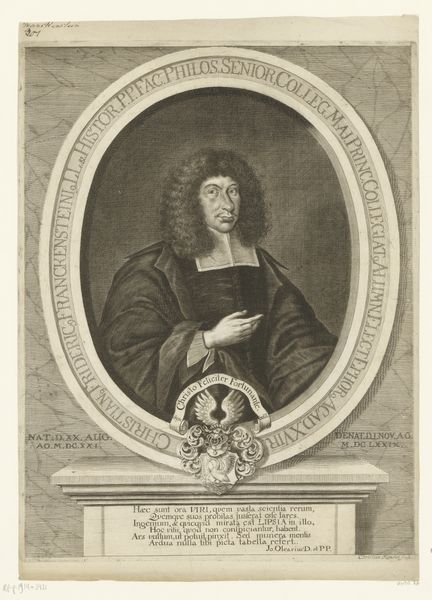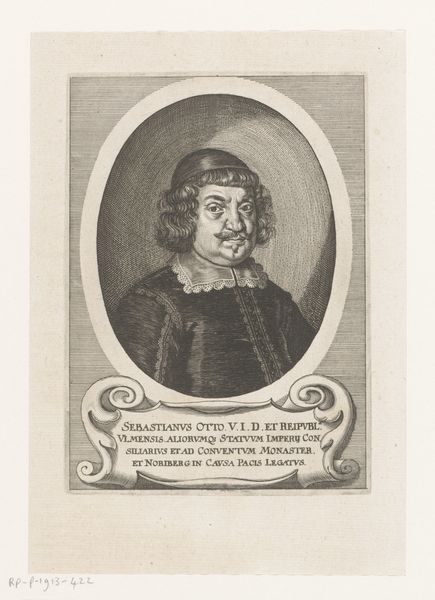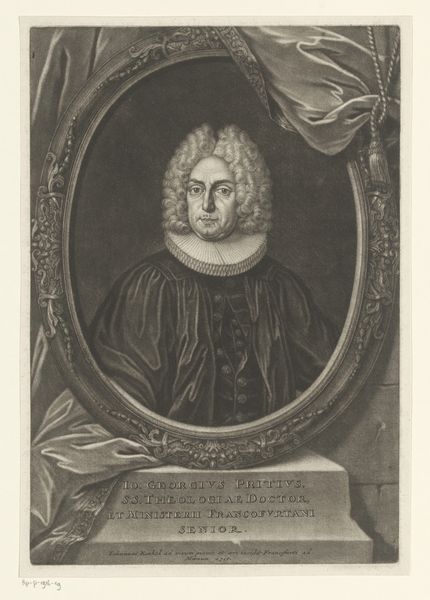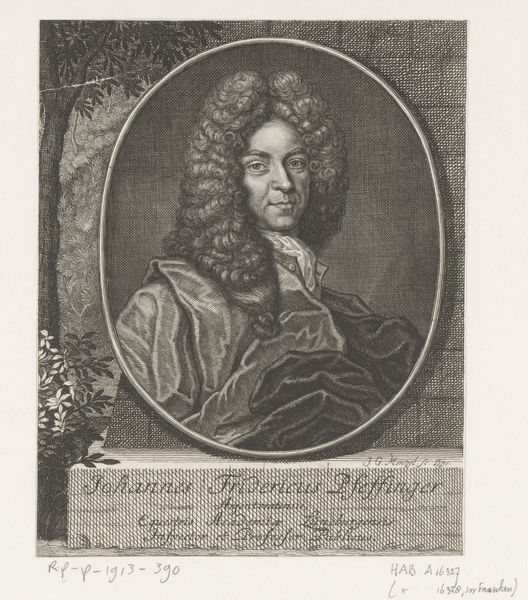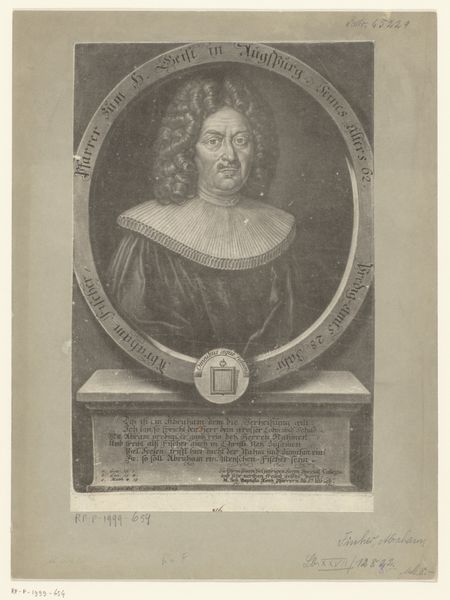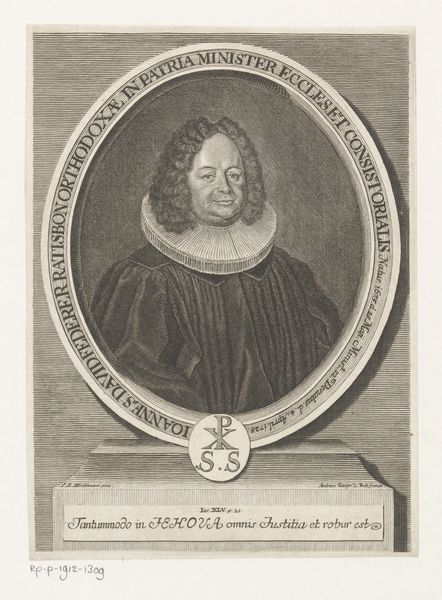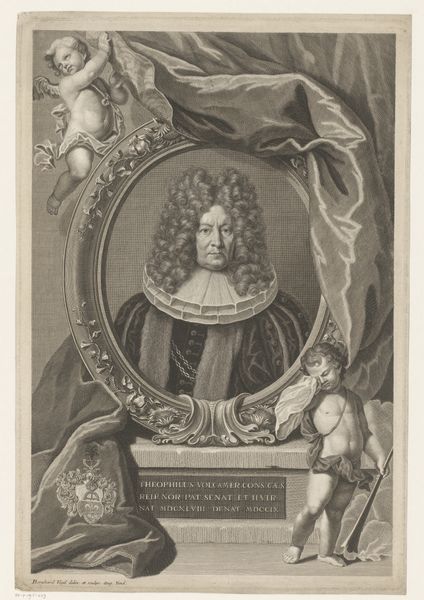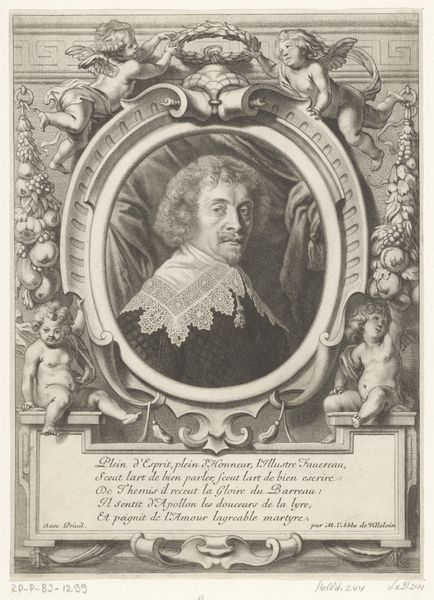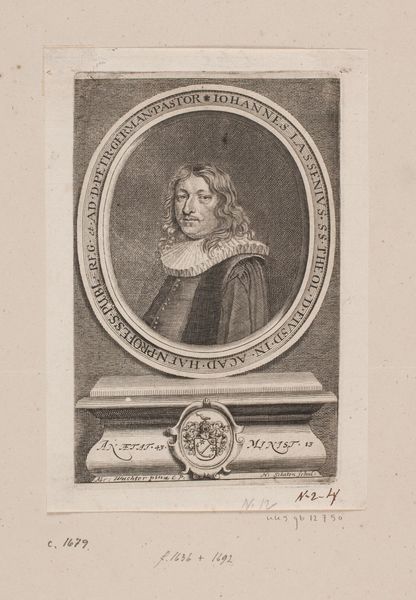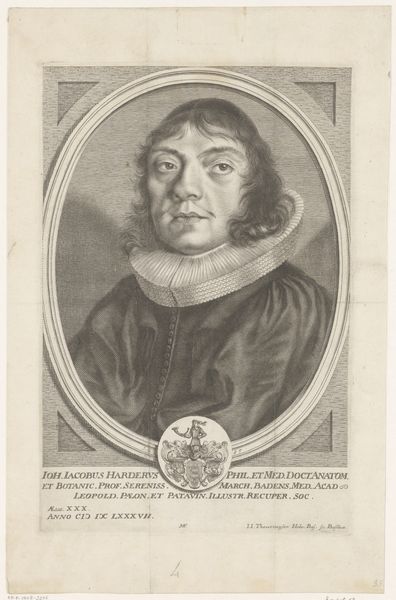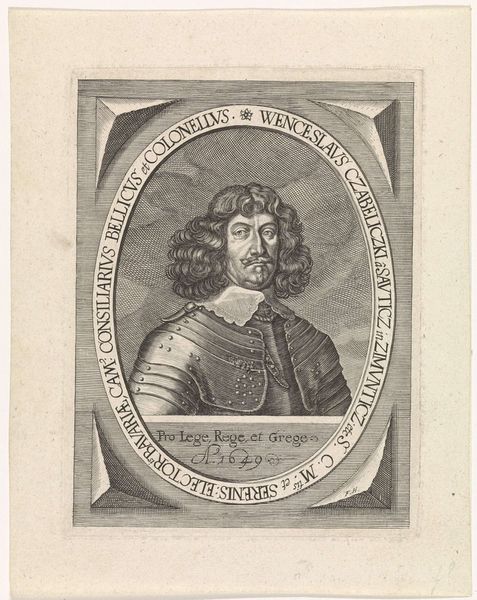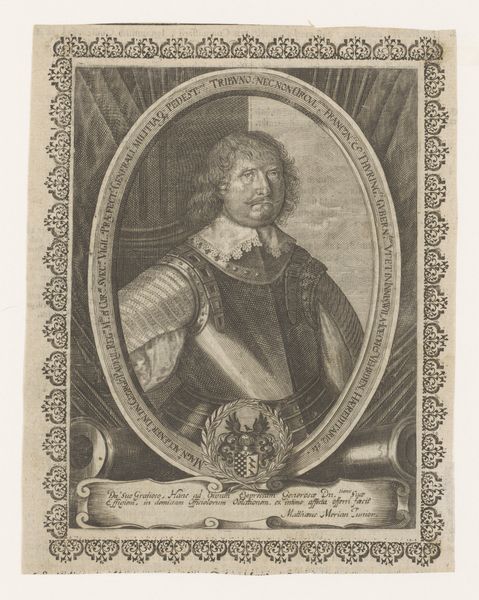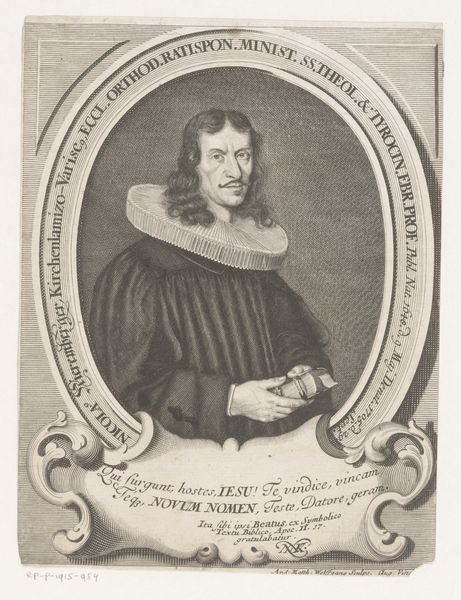
Portret van Balthazar Baro in een ovaal gedragen door putti 1600 - 1667
0:00
0:00
print, engraving
#
portrait
#
baroque
# print
#
caricature
#
old engraving style
#
caricature
#
portrait drawing
#
engraving
Dimensions: height 162 mm, width 107 mm
Copyright: Rijks Museum: Open Domain
Curator: This is a print attributed to Michel Lasne, dating somewhere between 1600 and 1667, now residing here at the Rijksmuseum. The artwork is called "Portret van Balthazar Baro in een ovaal gedragen door putti," which translates to “Portrait of Balthazar Baro in an Oval Carried by Putti.” Editor: Oh, there’s a lot to unpack! My initial impression is that this print has a real sense of movement. The swirling Baroque frame contrasts the stern face within. There’s almost a caricature element with that severe look against all those cute little putti. Curator: Yes, I see what you mean. Let’s examine that structure more closely. The oval format, typical of Baroque portraiture, creates a defined space for the sitter. Observe how the frame almost feels like an architectural proscenium arch. The meticulous detail, particularly the play of light and shadow, really emphasizes the textures—look at the fabric of Baro’s coat versus the smooth skin of the cherubic putti. It’s a fascinating study in contrasting forms. Editor: Precisely. The putti are standard bearers for classic associations with cherubic innocence. Their presence could suggest Baro's virtue, piety, or maybe even hoped-for progeny. Given the somewhat judgmental gaze of the subject and the poem printed below him, there’s this tension between celebrating a noble figure versus perhaps, a veiled critique. Baroque art loved these visual paradoxes! Curator: I concur. There's certainly a level of intended psychological complexity created by juxtaposing those classical tropes against what we know of portraiture conventions. And note the strategic placement of text. Lasne utilizes this formal structure to draw the eye—creating a hierarchy of information that’s central to its function as propaganda of personality. Editor: That's a great point about the intentional messaging! These aren’t just design choices; the whole composition constructs a lasting image of power. In the broader scope of cultural imagery, it suggests so much about the period’s expectations and presentations of elite subjects. Curator: Indeed. I have always been struck by the interplay of lines and values, how form follows function. This piece is so wonderfully controlled; a masterful study in visual rhetoric. Editor: Agreed, thinking of those putti, I feel it almost teases with innocence while cementing Baro's memory in history. Fascinating.
Comments
No comments
Be the first to comment and join the conversation on the ultimate creative platform.
